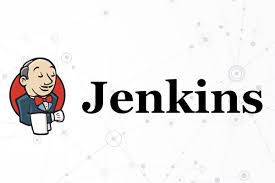Kubernetes Tutorial for Beginners: Basic Concepts
- Steve Smith

- Nov 27, 2024
- 4 min read

If you have spare any time in the technology later you have probably hear the term Kubernetes. It is the go to platform for container orchestration making it simpler to manage scale and deploy application. But let’s be honest Kubernetes can feel terrifying when you are just starting out. All those buzzwords and concepts? It’s enough to make anyone’s head spin. But do not worry this guide will break down the basics of Kubernetes in a way that makes sense.
What is Kubernetes Anyway?
Let’s start at the beginning. Kubernetes is an open source platform developed by Google. It’s designed to manage containers lightweight portable units that package up your application and everything it needs to run. Think of containers as little to go boxes for your app.
Now running one or two containers is simple. But when you are dealing with dozens hundreds or even thousands things get complicated. That’s where Kubernetes comes in. It’s like the air traffic controller for your containers keeping everything running smoothly scaling up when demand increases and scaling down when things quiet down.
Why Should You Care About Kubernetes?
Imagine you are running an app on multiple servers. Without Kubernetes you’d have to manage everything manually assigning resources restarting failed apps and ensuring everything is available 24/7. It’s like trying to juggle flaming swords. Kubernetes automates a lot of this heavy lifting so you can focus on building your app instead of babysitting it.
Core Concepts of Kubernetes
Let’s break down some of the essential building blocks of Kubernetes. do not worry you do not need a degree in computer science to understand these concepts.
1. Cluster
A Kubernetes cluster is the foundation of everything. Think of it as a group of machines (virtual or physical) working together. These machines are divided into two types:
Master Node :- This is the brain of the operation responsible for managing the cluster and making decisions (like scheduling tasks or handling updates).
Worker Nodes :- These do the actual heavy lifting running the containers.
2. Pods
Here’s where things get interesting. A pod is the smallest unit in Kubernetes. It’s essentially a wrapper for your container(s) along with the resources it needs to run like networking and storage.
Each pod is designed to run a single instance of your application. If your app grows Kubernetes can spin up more pods to handle the extra traffic. Pods are ephemeral meaning they can be created and destroyed as needed. Kubernetes takes care of this automatically so you do not have to.
3. Nodes
A node is one of the machines in your cluster. It can be a physical server in a data center or a virtual machine in the cloud. Each node runs multiple pods. If a node fails Kubernetes will redistribute its pods to other healthy nodes in the cluster. Pretty cool right?
4. Services
In Kubernetes a service is like a traffic director for your app. It ensures that even if pods come and go your app is always reachable. For example if you are running a web app a service will make sure incoming requests are routed to the right pod even if the underlying pods change.
5. Deployments
This is where the magic of automation shines. A deployment allows you to describe your app’s desired state like how many pods you want running. Kubernetes will handle the rest creating new pods updating them or scaling them up and down as needed.
If something crashes the deployment will automatically replace it. It’s like having a repair crew on call 24/7.
Kubernetes in Action: A Simple Example
Let’s say you have built a web app in a Docker container. To run it on Kubernetes you’d:
Create a Pod :- This wraps your container and tells Kubernetes what resources it needs.
Set Up a Deployment :- This specifies how many replicas (copies) of your app you want running at any time.
Expose a Service :- This makes your app accessible to users handling all the routing.
With these three steps Kubernetes will ensure your app is running smoothly even if something goes wrong.
Why Is Kubernetes So Popular?
Kubernetes Training has taken the tech world by storm for a few reasons:
Scalability :- It can handle everything from small apps to massive enterprise systems.
Flexibility :- Kubernetes works with any type of containerized app whether you are running on AWS Azure Google Cloud or your own hardware.
Resilience :- With features like self healing pods rolling updates and automatic scaling it keeps your apps available no matter what.
Getting Started with Kubernetes
Ready to dive in? Here are some tips to get started:
Install Minikube :- This is a great tool for running Kubernetes locally on your computer. It’s perfect for learning.
Use kubectl :- This is the command line tool for connecting with Kubernetes. You will use it multiple times so get familiar with it.
Experiment with YAML :- Kubernetes configurations are written in YAML files. do not worry if you have never used YAML it’s just a fancy way to define settings.
Follow Tutorials :- Start with small hands on projects to understand the basics. Deploy a simple app scale it up and see how Kubernetes handles it.
Final Thoughts
Kubernetes might seem massive at first but once you understood the basic it is an incredibly powerful tool. Whether you are running a tiny project or managing enterprise scale infrastructure Kubernetes can make your life simpler. Take it one step at a time and soon you will be orchestrating containers like a professional.








Comments